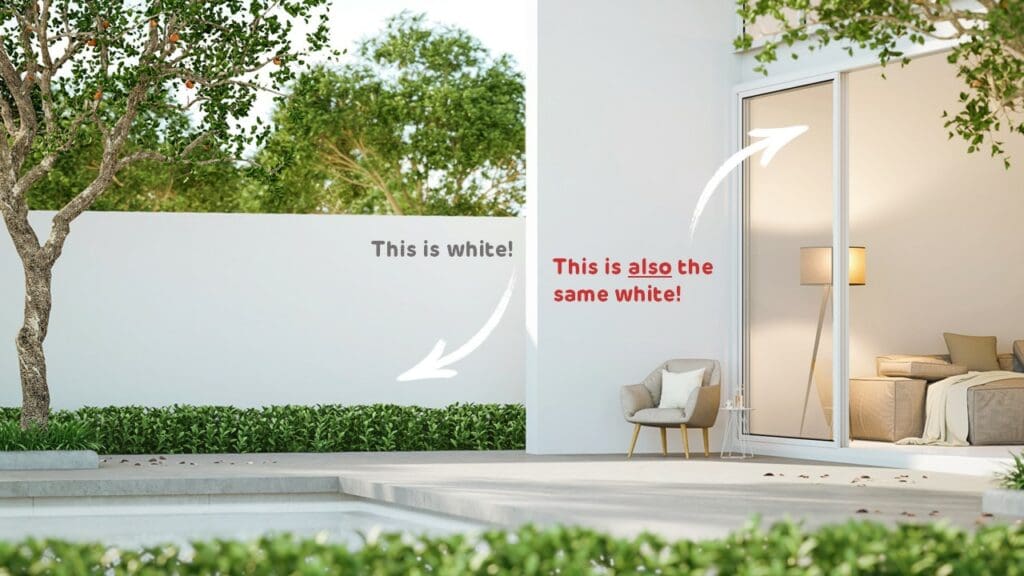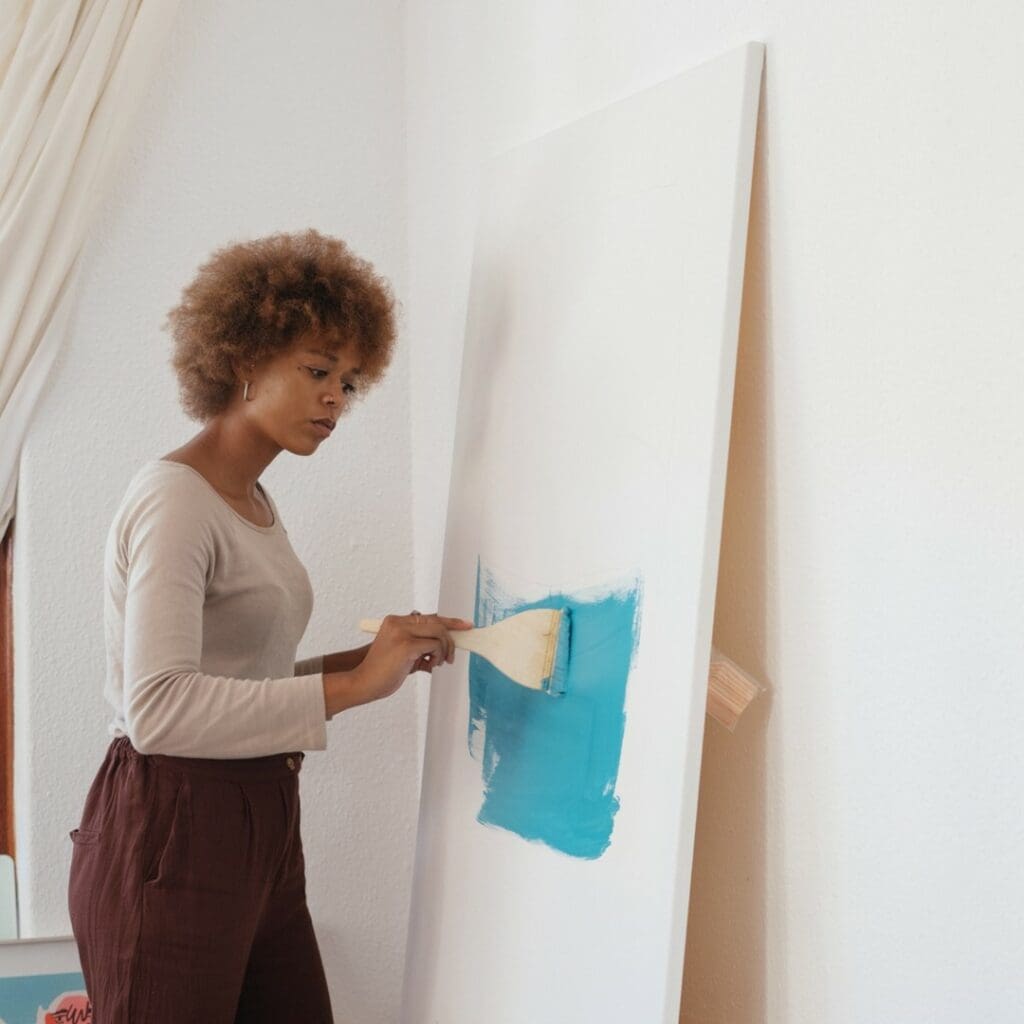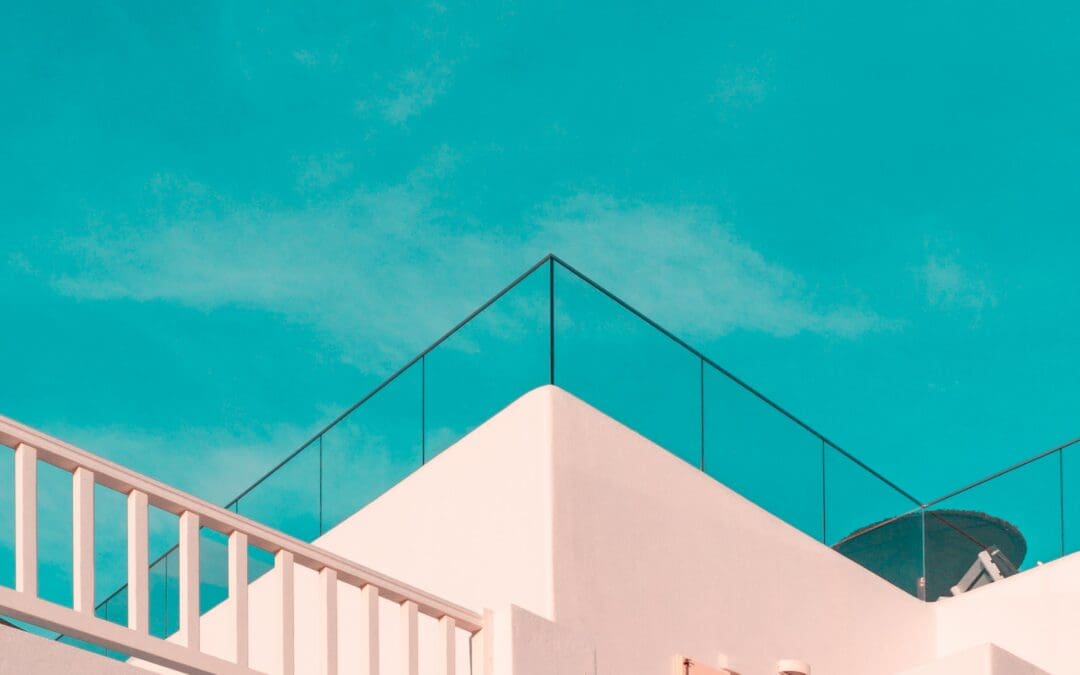Any color’s expression – in other words, the way we perceive the color – will adapt, depending on the following environmental factors:
- Lighting Conditions: In South Africa, northern facing rooms get lots of bright natural light and can therefore make colors appear lighter and warmer in color. On the other hand, south facing rooms get little and cooler light, that can make colors appear darker and cooler in tone. As the sun moves during the day, the color will continue to alter. Even artificial light can drastically alter the expression of a color, so that it looks like a completely different hue!

- Surface angles and texture: The same color painted on a surface with an angle, like a roof, can appear lighter and brighter than if it was painted on a wall. Add further texture to that same wall and the color will appear even darker, this is due to the shadows the texture casts onto the surface.
- Paint finish: Paints that provide a high gloss finish will have a deeper and richer color expression than a flat matt finish. If you can imagine a matt surface will look like little mountain peaks under a microscope, this diffracts the light waves – that of which a color is made off – in different directions, so that our eyes pick up less wavelengths of that color. On the contrary, a glossy smooth surface keeps those color wavelengths in more of a straight line, resulting in us literally seeing “more” of that color.
- Reflections: You may be baffled as to why the same color used on your exterior walls looks perfect on a house further down the street, but now appear redder in color on your walls? Ever considered, that your neighbor’s red brick clay house could reflect onto your home, adding hues of red to your walls. See image below!

So what can we do?
Purchase a sample of the paint in the color you like, and paint out at least a one square meter block across the surface that you want to paint. If you intend to use the same color throughout your home, it may be a good idea to purchase a large artist canvas that you can move around your home, to see how the color will adapt in appearance from one room to another, or turn an empty cereal box inside out and paint it with your sample colour, then you will have a 3-D shape to see how the colour will look at different angles!

Because exterior walls often have more surface texture, we would recommend painting 1 square meter blocks across a few walls of your home that are facing different directions. This will give you an idea of what the color will look like in shaded areas and how nearby reflections, like your pool and even your lawn, might affect the color expression.
Top tip! Take some time!
We all get excited and often want to rush through paint projects to get to the end result, but it will be worth your while to take at least 3 days, preferably over a weekend, or time period, where you can view the color at different times of the day, and hopefully different weather conditions, to ensure you are happy with your choice.
Not happy with your color choice?
Try to understand what it is about the color that you don’t like. Is it just the shade? Then try the same color in a lighter or darker shade. Or is it perhaps the undertones? Maybe you like muted blues, but with a hint of warmth, then try and find a shade close to your original color with slightly warmer undertones.
At the end of the day, it is better to test a color, than having to live with a color that you don’t like and end up spending a fortune and going through the disruption to do it all again!
But then again, you might enjoy change! So be bold and enjoy the experience!
Click on this link to view our Marley M22 Paint Colours and our Marley M11 Paint Colours

